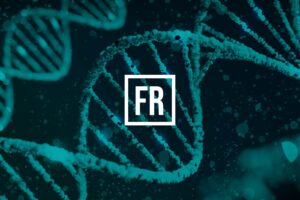Women are born with all their eggs. Throughout their lives, they will use up these eggs until there are none left; this stage is called the menopause. Although women are born with millions of eggs, the number seems to fall rapidly so that by the time they reach puberty they probably have around 600,000 of the original and by the age of 30 this number is probably around 180,000.
Compounding this problem is the fact that no two women are born with the same number of eggs and that no two women seem to lose their eggs at the same rate. This means that although most women will have an average number of eggs for their age, some will have more and some will have less.
The other important issue, beyond the number of eggs, is the fact that as women grow older the egg quality also seems to decline. This is seen in the pregnancy rates for women over the age of 35 where the chances of pregnancy start to fall and by the age of 38 there is an acceleration in this fall. Equally, the risk of miscarriage and the risk of having a chromosomally abnormal pregnancy rises beyond the age of 35 and rapidly increases beyond the age of 38. These problems are all predominantly linked to the egg having the wrong amount of genetic material within it so that any embryo that results will also be abnormal and so less likely to implant and more likely to miscarry if it does.
Therefore, as age is linked to not only egg quantity but also egg quality, there is a logic in trying to preserve eggs at a younger age so that they can be used in later life when a woman’s own eggs will be less in quantity and quality. In effect preserving fertility potential of their younger self.
What is egg freezing?
Egg freezing is a process whereby a woman’s eggs are collected and frozen for later use. Usually, this is done at an age when a woman’s own fertility is optimal. It is done for a variety of reasons but in essence it allows delaying pregnancy from a present time to one at a later date. The reasons for this are complex and include not being in the right relationship, career considerations or simply wanting reassurance.
The eggs can then be thawed at a later date and used with either a partner or donor sperm to create embryos in an IVF laboratory. These are then used to hopefully create a pregnancy.
Preparing for egg freezing
The process of egg freezing is in essence the first half of an IVF cycle – we will discuss this later. Preparing for this treatment may help your chances of success. In general, a healthy lifestyle, not smoking and keeping alcohol to a minimum are sensible. There is good evidence to show that cigarette smoking and excessive alcohol consumption are detrimental to a woman’s fertility and a significant part of this is related to the direct effects of alcohol and smoking. A healthy diet that has all the important nutritional components, that includes fats, protein and carbohydrates, is important. There is some evidence to show that a “Mediterranean type” diet may be beneficial to women’s fertility and this is encouraged in women who are trying for a baby and therefore probably would benefit women who want to freeze eggs. Having said that, many women across the world, with wide varying diets are perfectly fertile and it is important to maintain a perspective.
Supplements may be helpful. However, the evidence base behind most of these is lacking. They probably will do no harm and so often they give a sense of control in what can seem like an uncontrollable situation. Most evidence and studies around supplementation are of poor quality and tend to reinforce one view or another. A good fertility specialist will be able to talk through supplements and give a balanced view.
As with all medical treatments, investigations help in planning treatment. The mainstay of fertility tests is the test of ovarian reserve. Of these, the Anti-Mullerian Hormone (AMH) and Antral Follicle Count (AFC) are probably the most important. AMH measures a blood test for a hormone that is made by the cells that surround each egg and so reflects the total number of eggs. The AFC is an ultrasound test where the number of small scans containing eggs is counted during an ultrasound scan. Both these tests reflect egg quantity only. They tell us nothing about egg quality and they tell us nothing about the rate of decline in egg reserve. These tests were originally developed to help guide planning for IVF cycle; they have found current use as a variety of attempts to predict chances of pregnancy and future fertility. It should be very clear that they cannot do either of the latter.
What happens during an egg freezing cycle?
In order to understand the process of egg freezing, it may be helpful to consider what happens in a normal menstrual cycle first. For women who have a regular predictable menstrual cycle, there are two main events ongoing – egg recruitment and then ovulation. At the start of the period, the ovaries present the body with several eggs. The number that are presented is linked to egg reserve – the higher the egg reserve, the more that are presented. The brain then makes a hormone, Follicle Stimulating Hormone (FSH), to stimulate the follicles so that one develops. Usually, the most sensitive and responsive, and therefore also, maybe, the healthiest egg will start to develop. The remainder will die away by a process known as atresia. As the follicle starts to grow, it will make oestrogen, and this oestrogen has negative feedback onto the brain which then, as a result of the rising oestrogen levels, reduces that mount of FSH made and this in turn means that no other follicles will develop. In this way, only one egg is allowed to develop each month in a natural cycle.
In an egg freezing cycle, women will take the hormone FSH, via daily injections, from the start of their period to try and cause around 10-15 follicles, at least, to start developing. The number that develops is based on their ovarian reserve tests and age. This means that, in contrast to what happens normally, no one follicle is selected over the others and rather than one developing, many will develop. As these follicles develop, they will make oestrogen, this oestrogen would normally feedback to the brain and reduce FSH production. However, as the FSH is being given by daily injections, there is no negative feedback and all the follicles will continue to develop. The development of the follicles is monitored by ultrasound scans and blood tests over the next two weeks approximately. At the end of this time, when the follicles have had enough time to develop, the eggs are ready to be collected. The final injection given is called a trigger shot – this is a hormone that causes the developing eggs in the follicles to proceed onto the next stage of their development and become mature. There are two types of trigger available and the choice of which one to use is important. The egg collection itself is done under an anaesthetic and no pain should be felt at all through the procedure. An internal scan is done whilst the woman is asleep, and a needle is guided into each follicle and the fluid aspirated. Within the fluid should be an egg. The egg collection itself is a quick procedure and for most women will last no more than fifteen minutes.
Once the eggs are collected, they are then assessed for maturity and frozen. Egg freezing is done by a process called vitrification. The advent of vitrification is what has enabled us to freeze eggs with such high success rates. Eggs, like any other cell in our body, are made up of water predominantly. When frozen, this water in cells forms ice crystals which damage the delicate structures within the cells. This damage is what caused previous forms of egg freezing to yield poor results. Vitrification, however, changed this as it involves dehydrating the egg before freezing – in essence protecting the egg from ice crystals.
What are the risks of egg freezing?
Like all medical procedures, egg freezing carries risks. Overall, these risks are low and the procedure is done commonly now with the vast majority of women having no complications.
The risks include:
- Not responding to stimulation (5%): this is related to age and egg reserve and the clinic should have had a clear and honest conversation around individual circumstances and chances.
- No eggs being collected (<5%): very rarely no eggs are collected. This can be due to low egg reserve or age but equally can be due to a suboptimal response to injections of follicles being empty.
- Infection and bleeding at egg collection (<1%): the risk of inserting a needle into the ovaries is low but occasionally can result in either bleeding or an infection which would require further immediate treatment.
- Over response (<1%) : young women and women with high ovarian reserve are at risk of over responding to medications and developing ovarian hyperstimulation syndrome (OHSS). This requires careful monitoring and judicious use of alternative medications to minimise risks. This complication is very rare in good clinics.
- No mature eggs (<1%): occasionally eggs can be collected but none are at a stage where they can be frozen. This can be related to protocol selection and monitoring and needs a careful evaluation to see if any changes would result in a better outcome in future cycles.
- Failure to thaw and fertilise: one of the longer term risks, even if a good number of eggs are frozen, is the chance that a lower than expected number of eggs would survive the thaw and fertilise (see below for further discussion).
What is my chance of having a baby if I store my eggs?
There is very limited data about the outcomes for women who are storing eggs for their own later use. The data we have about the outcomes for donor eggs may not apply to women storing eggs for their own use, as those donating eggs have been selected for their fertility potential and therefore may have a better outcome. We can consider different scenarios to help us understand this better:
Table 1 is simply a guide to the chance of a live birth at different ages and is there as an overall guide. It assumes that the fertility potential of a woman storing eggs or embryos for her own future use is the same as that of a women having IVF because of a conception delay: this may not be true and it could be better or worse. It also only applies when there is at least one embryo available to transfer. Some women who have eggs collected for storage of either eggs or embryos sadly will not have an embryo to transfer if none of the eggs/embryos survive the storage process, or, in the case of stored eggs, none of those that survive result in an embryo. The estimates do not differentiate between cycles where more than one embryo was transferred at a time.
| Table 1: estimated live birth rates for one embryo transfer cycle using fresh embryos, stored embryos and embryos created from stored eggs | ||||||
|---|---|---|---|---|---|---|
| age group | under 35y | 35-37 | 38-39y | 40-42y | 43-44y | >44y |
| fresh embryo(s)* | 34% | 29% | 22% | 14% | 5% | 1% |
| estimate for stored embryo(s)** | 34% | 29% | 22% | 14% | 5% | 1% |
| estimate for embryo(s) from frozen eggs*** | 28% | 24% | 18% | 11% | 4% | 0.8% |
*HFEA data: live births per treatment cycle with IVF & ICSI in 2017.
**Based on HFEA data for fresh cycles: outcomes with fresh and stored embryos are approximately the same and I have presented estimated live birth rates by age at which the embryos were created, not the age of the woman when she used them .
***Assumes live birth rate with stored eggs is 19% lower than with fresh eggs.
+May over-estimate live birth rates in women over 36 years old as fewer eggs may survive the storage process.
The estimates in Table 1 are for the outcome of one embryo transfer cycle, which may be of more than one embryo at a time. For some women storing eggs/embryos there may only be one embryo, but for others there may be several embryos and therefore more than one chance to become pregnant, i.e. she may be able to have more than one attempt per batch of eggs collected. The chance of a live birth at any particular age depends on the number of eggs collected and the number of embryos that result from that batch of eggs.
Table 2 illustrates the average number of eggs collected in one cycle at different ages.
| Table 2: average number eggs collected by age | ||||||
|---|---|---|---|---|---|---|
| age group | under 35y | 35-37 | 38-39y | 40-42y | 43-44y | >44y |
| number of eggs collected | 12 | 10 | 9 | 8 | 6 | 4 |
HFEA Supplement to the ‘Egg freezing in fertility treatment’ report 2010-16
Not every egg collected is suitable to be stored (see above). So, although eggs are not tested before storage (there is no currently available way to test eggs and still leave them capable of being fertilised), they are examined under the microscope by the embryologist to ensure that they are mature and are not showing signs of degenerating. On average, 80% of the eggs collected are stored. This percentage is approximately the same as the proportion of fresh eggs that are suitable for fertilisation if embryos are to be created and stored.
As mentioned previously, not every stored egg will survive the process but approximately 70-80% will. The ability of eggs to survive the storage process depends on their quality, which is age dependent, plus the technical ability of the laboratory storing the eggs. Eggs from younger women are of better quality and have a higher chance of surviving. Eggs from women over 35 years of age have a lower chance. Although many clinics will do a reasonable number of egg storage cycles, they may not have used enough of these stored eggs yet to be able to demonstrate their results.
How many eggs do I need to have a baby?
Several different research groups have used mathematical modelling to try to answer this question: it is therefore important to see these numbers simply as a guide to decision-making, as with the estimates discussed before.
Table 3: chance of having a baby from stored eggs if 10 eggs were collected
| Table 3: chance of having a baby from stored eggs if 10 eggs were collected | ||
|---|---|---|
| age group | 35 years or under | 36 years or over |
| estimated live birth rate | 60-70% | 30% |
These estimates are based on using all the embryos that result from the hypothetical 10 eggs that were collected, if needed. To put it another way, the estimates are for the chance of having a baby from the batch of eggs collected: some women will only have one embryo transfer cycle and others may have several. The live birth rate for women under 35 years of age does not vary very much within that age group. So for example, the chance of having a baby for a 30 year old is not that different from that for a 35 year old. In contrast, the variation in live birth rates for women in the 36 years and over group varies considerably by age, those 40 years old and above having a much lower chance of having a baby than those at the lower end of this age group. It is likely that women 36 to 39 years of age will have a live birth rate around 40-50% with 10 eggs collected.
The chance of having a baby depends on the number of eggs available, which depends on the number that were collected.
Table 4 illustrates the estimates if 20 eggs were collected. It also includes the average number of eggs collected in one cycle for each age group.
| Table 3: chance of having a baby from stored eggs if 10 eggs were collected | |||
|---|---|---|---|
| age group | 35 years or under | 38 years | 42 years |
| estimated live birth rate | 80-90% | 60-70% | 30-40% |
| average number of eggs collected per cycle | 12 eggs | 9 eggs | 7 eggs |
| number of cycles needed to have 20 eggs collected | 1 cycle | 2 or 3 cycles | 3 cycles |
Table 4 illustrates that the average woman under 35 years will need to do 2 egg storage cycles to have a 90% chance of a live birth. A 38 year old woman will need to do 2 or 3 cycles to have a 60-70% chance and a 42 year old will need to do 3 cycles for a 30-40% chance.
How long can eggs be stored for?
Current law in the UK allows for eggs to be stored for up to 55 years. Consent is initially taken from 10 years and then can be extended in 10-year renewals. It is therefore very important to remain in contact with your clinic to ensure that storage consent is always valid.
What is the cost of egg freezing?
This will vary from clinic to clinic. However, in general, the estimate would be around 4000-5000 pounds inclusive of tests and treatment. Medication costs will vary depending on individual circumstances but can range from £800-£2000.
Summary
Egg freezing has provided women with an opportunity to preserve their own eggs at a time when their own fertility is optimal for use later when their own natural fertility chances may have depleted. Whilst it is a good treatment, with good chances of success, these chances depend on age and ovarian reserve. Like all medical treatments, it carries risks and discussion of these risks should form a key part of consultations.






